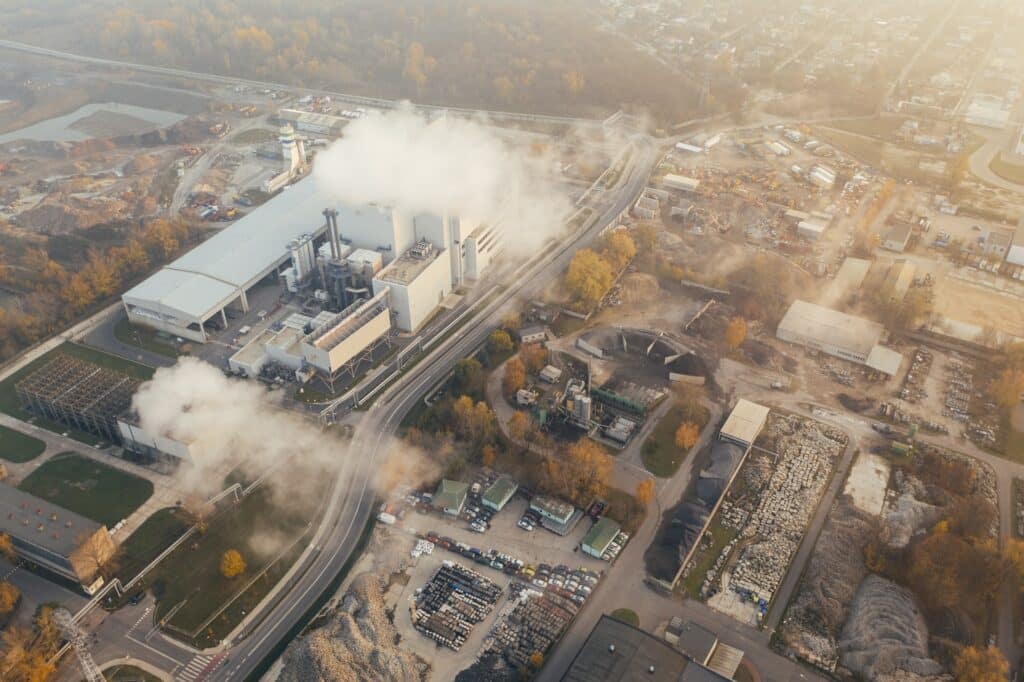Formaldehyde is a chemical that usually occurs as a colorless, flammable gas. More commonly known as “formaldehyde”, this substance is often marketed in a liquid state. Formaldehyde is extremely dangerous for health and we will detail you through this article the effects following exposure to this product, the measures to take in the event of exposure, and everything you need to know about formaldehyde.< /span>
What are the health effects of formaldehyde?
Whether present in gas or liquid form, formaldehyde is very dangerous to health in the event of brief or prolonged contact. The primary routes of exposure to this material are through inhalation, skin contact, eye contact, or ingestion.
Effects when inhaled
Inhaling formaldehyde gas is particularly dangerous to health. The vapor is extremely toxic and can cause severe nose and respiratory tract irritation, resulting in death if too much is inhaled.
Fluid forms in the lungs due to pulmonary edema. The victim also begins to cough a lot, suffer from dyspnea, difficulty breathing and a feeling of tightness in the chest. These symptoms may persist for hours after inhaling formaldehyde and worsen when the victim performs physical exertion.
Effects in case of contact with skin and eyes
Formaldehyde has a corrosive effect on the skin. Any exposure to this substance can quickly lead to redness and burning followed by more or less severe pain. Scars may be permanent depending on degree of exposure and length of time product remains on skin.
As for eye contact, formaldehyde is also corrosive and can cause serious eye damage. Eye irritation and burns may occur, resulting in permanent damage such as blindness. In the form of gas, formaldehyde strongly irritates the eyes.
Effects of ingestion
If you accidentally ingest formaldehyde, be aware that this substance is very toxic and corrosive to mucous membranes and internal organs. Formalin causes severe burns to the lips, tongue, throat and stomach. The liver and kidneys can also be affected.
Other symptoms such as nausea, vomiting, abdominal cramps and diarrhea may also occur. Finally, depending on the quantity ingested, death may occur if not treated as soon as possible.
The effects of long-term exposure
There are cases where some people can be exposed to formaldehyde over a long period of time. This can lead to dry skin, dermatitis, the appearance of allergic reactions in the skin (redness, swelling, itching, rashes, etc.). Hands, face and the rest of the body are susceptible to these symptoms.
The respiratory tract and nervous system are also exposed to the long-term effects of exposure to formaldehyde. Nasal cavity cancer is often the most common case of cancer encountered in people exposed to formaldehyde for a long time.
What steps to take if exposed to formaldehyde?
As you can see, any exposure to formaldehyde, whether in small or large quantities, can be dangerous to your health. It is therefore imperative to take measures as quickly as possible in the event of inhalation, skin contact or ingestion.
In the case of inhalation
The victim must be breathed fresh air quickly. If the area where they are is contaminated with formaldehyde gas, protect yourself beforehand before evacuating the person in question. Then put her in a posture that makes her breathing easier. If breathing is difficult, emergency oxygen administration is required. Also minimize her physical effort, and prevent her from moving around unnecessarily. This may increase suffocation and the risk of pulmonary edema. Finally, get her to the hospital as soon as possible.
In the case of skin contact
If a person has touched formaldehyde, it is advisable not to come into direct contact with it without protecting your hands and all bare surfaces of your body. Remove all clothing and accessories contaminated with formaaldehyde and what the victim is wearing. Then rinse the affected areas with lukewarm water for about thirty minutes without interruption. Then take the person as quickly as possible to the hospital while making sure to rinse the areas during the trip if possible.
In the event of eye contact
In case of eye contact, flush formaldehyde-affected eye thoroughly with lukewarm water for at least 30 minutes without stopping. Protect the other eye carefully so that you do not come into contact with the contaminated water. Go to the hospital without delay to get treatment as quickly as possible.
In the event of ingestion
If you have inadvertently swallowed formaldehyde, the only action you should take in time to get to the hospital is to rinse your mouth thoroughly with water. The water will lessen the corrosive effects of the substance and you will have less sequelae.
Sources of formaldehyde in a home
Formaldehyde is very present in our environment without our realizing it on a daily basis. It can be released into the air and inhaled, and the biggest danger is that the gas is odorless and colorless.
Formaldehyde is present in chemicals used in the home such as glue, varnish, paint. Over time, it is released and the occupants unknowingly inhale it. Other household products such as cardboard, wallpaper, paper products and draperies also contain it. Finally, some composite wood products contain it because of the glue used in their manufacture.
However, this does not mean that your home is toxic and potentially deadly. It all depends on the content of formaldehyde present in these products, the level of release into the air and other factors to minimize their concentration in the air. For example, if you ventilate the rooms of your house sufficiently, the formaldehyde will be evacuated outside. Also be sure to choose the right products for everyday life, avoiding those that contain any form of formaldehyde in their composition.






About The Author: Cedric Pharand
More posts by cedric Pharand